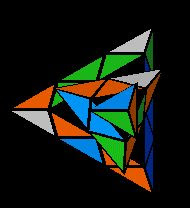THE FORTUNE AT THE BOTTOM OF THE PYRAMID:
OUTLINE: C.K Prahalad proposes that businesses, governments, and donor agencies stop thinking of the poor as victims and instead start seeing them as resilient and creative entrepreneurs as well as value-demanding consumers
Statistics have shown that there are tremendous benefits for multi-national companies who choose to serve these markets in ways responsive to their needs.
There are also poverty reducing benefits if multi-nationals work with civil society organizations and local governments to create new local business models.
THE AIM: To “co-create businesses and markets that mutually benefit the companies and the communities”. (Hart & Simanis)
SOME EXAMPLES: Here are some examples of companies that have developed successful business partnerships with income-poor communities, while creating a product or service that has enriched the lives of the people in this “bottom of the pyramid” market.
1) Micro-credit
One example of “bottom of the pyramid” is the growing microcredit market in South Asia, particularly in India. With technology being steadily cheaper and more ubiquitous, it is becoming economically efficient to “lend tiny amounts of money to people with even tinier assets”. The firm discussed in the article, Sa-Dhan, argues that the availability of credit to the poor “helps the poor but allows banks to increase their business”.
2) Agriculture
For example, eChoupal in rural India.ITC manages an agricultural trading company. To eliminate the inefficiencies in its supply chain caused by corrupt middle men at local rural markets, it created a network of “e-Choupals” (choupal = village square) in rural communities. Through these e-Choupals, individual farmers have been able to check the market trading price of their produce and sell it directly to ITC. Both the individual farmers and ITC have increased their revenues, because the layers of ineffiency no longer have a role in the transaction between seller and buyer.
3) Market-specific products
An example of product that is designed with needs of the very poor in mind is that of a shampoo that works best with cold water. Such a product is marketed by Hindustan Lever.
4) Business and Community Partnerships
The SC Johnson Company has been partnering with youth groups in the Kibera slum of Nairobi, Kenya. Together SC Johnson and the groups have created a community-based waste management and cleaning company, providing home-cleaning, insect treatment, and waste disposal services for residents of the slum. SC Johnson’s project was the first implementation of the Base of the Pyramid Protocol
5) Housing
Community house-building projects that use natural materials. Or provding cheap, reliable alternatives to existing materials.
6) Health Care
Scenar – Low cost Russian medical technology that can easily be used by villagers http://www.benedickhoward.com/scenar-results.html
Specialised surgery facilities eg http://www.aravind.org
7) Energy
Biofuels made from plant extracts. Cassava plant??
8) Education
“Action-learning” in schools – projects, such as house building, water systems, organic farming etc, that benefit the community while still teaching maths, science, literacy.
Early childcare centres which allow both parents to work, and also focus on community connectedness, early education and women’s leadership.
9) Waste
Reuse and recycle systems. Collecting unwanted materials, such as car tyres, and turning them into useful products, eg. Shoe soles.We could provide the community with the equipment to manufacture these recycled products. The only cost would be the start up cost of the equipment, and the new product could potentially change peoples lives.
Recycling unwanted or donated reading glasses from developed countries, and providing a medical service and free eyewear in developing communities.
10) Technology
The $100 computer project, designed to revolutionise education of the world’s children. The proposed $100 machine will be a Linux-based, full-colour, full-screen laptop that will use innovative power (including wind-up) and will be able to do most everything, except hold huge amounts of data. The move is designed to offer the most important aid possible to a third world country – education alone will solve many of the problems of a country. The idea is to create a low cost computer by optimising the system, the system software and the componentry in numerous ways – essentially all designed to reduce the cost, weight and complexity of the computer and its constituent components. The plan also calls for the the laptops to be manufactured in very large numbers (millions) and sold directly to ministries of education in third world countries, which can distribute them like textbooks. When these machines are turned on, they form a peer-to-peer mesh network with nearby computers – a concept initially developed at MIT and the Media Lab. MIT is currently exploring ways to connect them to the Internet at very low cost.
These ideas should get you thinking in the right direction.
I have a few more ideas that I will discuss at our meeting. Have your own ideas ready to present to the group on Wednesday.
Talk to you then!
Jenna
skip to main |
skip to sidebar


Team Leader

discovering the fortune at the bottom of the pyramid
"The Future At The Bottom Of The Pyramid" : Developing a profitable business venture that meets the needs of consumers among the world's poor
The Future At The Bottom Of The Pyramid
Blog Archive
Jenna

Team Leader
Team Profiles
The Pyramid Puzzle

discovering the fortune at the bottom of the pyramid

No comments:
Post a Comment